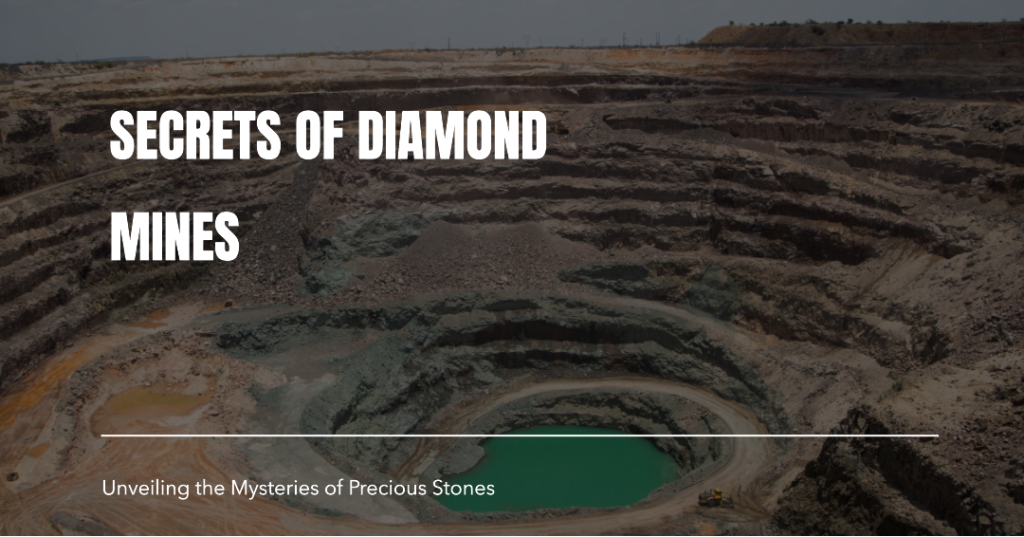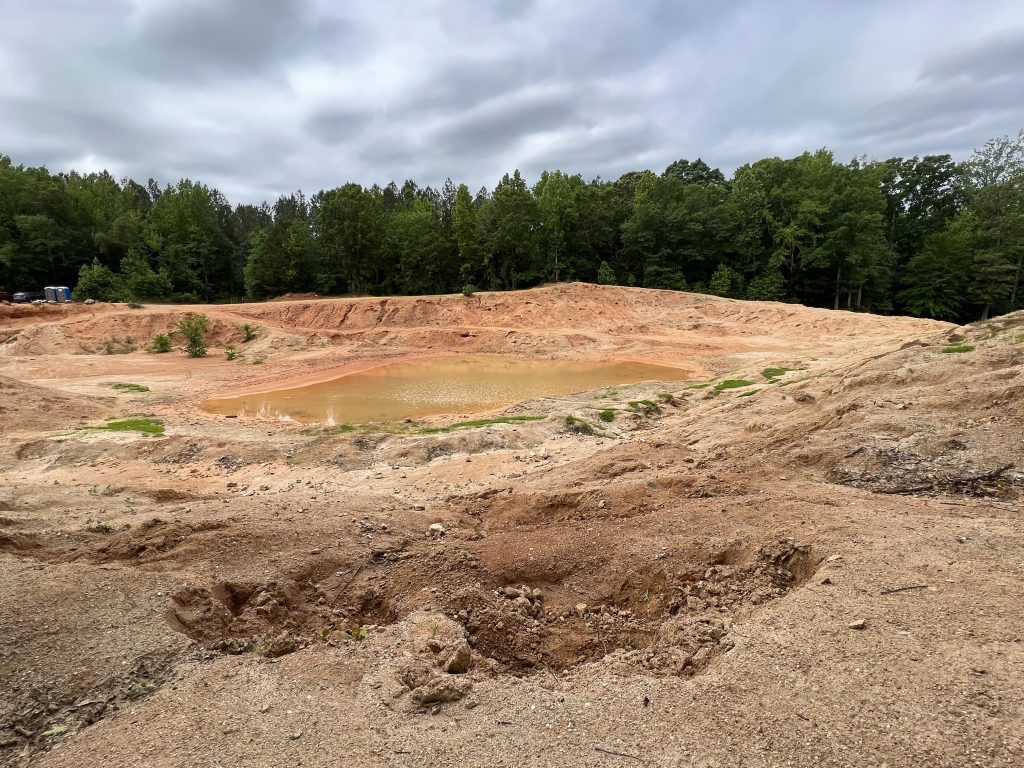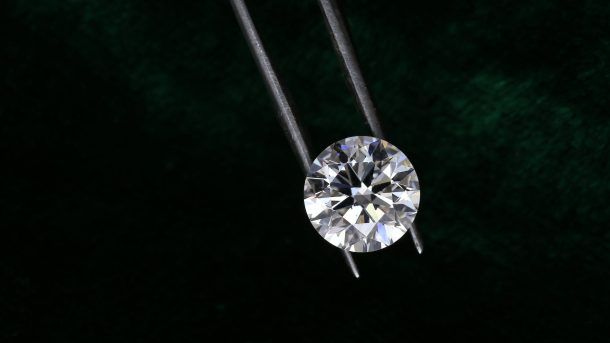If you’ve ever wondered about the fascinating world of diamonds and what makes them so unique, then “Exploring the Geological Wonders of Diamonds” is the perfect read for you. This collection of articles is specifically curated for those who have a keen interest in learning more about diamonds and their natural formation. From their geological origins to the incredible processes that create these precious gems, join us on a journey that unravels the secrets behind one of nature’s most sought-after treasures.
Diamonds in Nature: Unearthing the Geological Wonders
Diamonds, often associated with luxury and romance, are not only beautiful gemstones but also fascinating geological wonders. Formed deep within the Earth’s mantle under extreme conditions of heat and pressure, diamonds are a product of geological processes that span millions of years. In this article, we will explore the formation of diamonds, the different types of diamonds, diamond mining techniques, famous diamond mines, the diamond cutting process, diamond enhancement techniques, famous diamonds, the geological significance of diamonds, and even diamonds beyond Earth. So grab your pickaxe and join us on this journey to uncover the secrets of diamonds.
Formation of Diamonds
Carbon as the Building Block
At the heart of every diamond lies the element carbon. Carbon, the fourth most abundant element in the universe, takes on a unique crystalline structure under the right conditions, forming a diamond. It is the immense pressure and heat that transforms carbon atoms into the tightly-packed lattice structure that gives diamonds their exceptional hardness and brilliance.
Extreme Heat and Pressure
Diamond formation requires the perfect storm of extreme heat and pressure. This occurs deep within the Earth’s mantle, where temperatures reach thousands of degrees Celsius and pressures exceed 725,000 pounds per square inch. These intense conditions induce the carbon atoms to arrange themselves in a three-dimensional crystal lattice, effectively transforming carbon into a diamond.
Natural Laboratory of Earth’s Mantle
The Earth’s mantle acts as a natural laboratory for diamond formation. Rising volcanic activity and the movement of tectonic plates bring diamonds closer to the Earth’s surface over millions of years. Diamond-bearing rocks, known as kimberlites and lamproites, are brought to the surface during volcanic eruptions, allowing us to access these incredible geological treasures.

Types of Diamonds
Natural Diamonds
Natural diamonds, as the name suggests, are formed naturally and are incredibly rare. These diamonds are divided into various categories based on their color, clarity, cut, and carat weight. The Four Cs, as they are known in the diamond industry, determine the value and desirability of a natural diamond. The formation of natural diamonds takes millions of years and occurs deep within the Earth.
Synthetic Diamonds
Synthetic diamonds, on the other hand, are created in a laboratory setting and have the same chemical composition as natural diamonds. These diamonds are grown using processes that mimic the conditions found in the Earth’s mantle. While synthetic diamonds have garnered attention for their ethical and sustainable aspects, they are often used in industrial applications rather than in jewelry.
Diamond Mining
Exploration and Geological Surveys
Diamond mining begins with extensive exploration and geological surveys. Remote sensing techniques and advanced imaging technologies are used to identify potential diamond-bearing areas. Geological surveys are conducted to study the rock formations and mineral compositions, providing valuable insights into the presence and quality of diamonds.
Open-pit Mining
One of the most common methods of diamond mining is open-pit mining. This involves the excavation of large open pits to access diamond-bearing ore. Heavy machinery and explosives are used to remove the overlying earth and rock, allowing miners to extract the diamonds embedded within the ore.
Underground Mining
In situations where diamond deposits are located at much deeper depths, underground mining becomes necessary. This method involves the construction of tunnels and shafts to access the diamond-rich ore. Underground mining requires specialized techniques to ensure the safety of miners and the efficient extraction of diamonds.
Alluvial Mining
Alluvial mining involves the extraction of diamonds from rivers, beaches, and other areas where diamonds have been transported and deposited by natural processes. Miners use sieves, pumps, and other equipment to separate the diamond-bearing gravel from the surrounding sediment. Alluvial mining is often practiced in areas where diamonds have eroded and accumulated over time.
Famous Diamond Mines
Jwaneng Diamond Mine (Botswana)
Located in Botswana, the Jwaneng Diamond Mine is one of the world’s richest diamond mines. This open-pit mine produces vast quantities of high-quality diamonds, making it a significant contributor to Botswana’s economy. The Jwaneng Diamond Mine is known for its state-of-the-art mining practices and technologically advanced equipment.
Orapa Diamond Mine (Botswana)
Also situated in Botswana, the Orapa Diamond Mine is one of the largest diamond mines in the world. This open-pit mine has been operating since 1971 and has continuously produced a substantial number of diamonds. The Orapa Diamond Mine plays a crucial role in Botswana’s diamond industry, providing employment opportunities and contributing to the country’s economic growth.
Mir Diamond Mine (Russia)
Located in Russia, the Mir Diamond Mine is renowned for its deep underground mining operations. This mine gained international recognition for its production of significant diamonds, including some of the world’s largest. The Mir Diamond Mine has become a symbol of Russia’s rich diamond reserves and its importance in the global diamond market.
Cullinan Diamond Mine (South Africa)
The Cullinan Diamond Mine, situated in South Africa, is famous for being the source of the Cullinan Diamond, the largest rough diamond ever discovered. This mine has been in operation for over a century and continues to produce high-quality diamonds. The Cullinan Diamond Mine showcases the historical significance of diamond mining in South Africa and its impact on the diamond industry.
The Diamond Cutting Process
Planning and Analysis
Before a rough diamond can be transformed into a dazzling gemstone, it goes through an intricate process known as diamond cutting. The process begins with careful planning and analysis of the rough diamond’s shape, size, and inclusions. Skilled diamond cutters evaluate the diamond’s potential and determine the best way to maximize its beauty and value.
Cleaving or Sawing
The first step in diamond cutting involves cleaving or sawing the rough diamond to create smaller pieces. This is done using a specially designed saw or by applying a controlled amount of pressure to the diamond, taking advantage of its crystal structure and natural weaknesses. Cleaving results in diamond pieces known as octahedrons or dodecahedrons.
Bruting
After cleaving or sawing, the diamond pieces undergo bruting. This process involves shaping the diamond into a round or oval form by grinding it against another diamond. Bruting requires precision and skill to ensure that the diamond achieves the desired shape and symmetry.
Polishing
Once the diamond has been shaped, it undergoes the polishing process. Diamond polishers use various grit-sized diamonds to remove any remaining roughness and scratches, gradually giving the diamond its characteristic brilliance. Polishing requires a meticulous eye for detail and the expertise to bring out the diamond’s maximum sparkle.
Final Inspection and Grading
The diamond-cutting process concludes with a final inspection and grading. Trained gemologists examine the finished diamond under magnification to assess its quality, including factors such as color, clarity, cut, and carat weight. The diamond is then assigned a grade, which determines its value in the market.

Diamond Enhancement Techniques
Laser Drilling
Laser drilling is a diamond enhancement technique used to remove inclusions from a diamond or to improve its clarity. A laser is used to create microscopic channels within the diamond, reaching the inclusion and allowing it to be vaporized or bleached. Laser drilling is a common practice in the diamond industry but should be disclosed to potential buyers.
Fracture Filling
Fracture filling involves injecting a substance, such as glass or resin, into surface-reaching fractures in a diamond to enhance its clarity. This process reduces the visibility of the fractures and improves the overall appearance of the diamond. Fracture filling should also be disclosed when selling a treated diamond.
Irradiation
Irradiation is a technique used to alter the color of a diamond. The diamond is exposed to ionizing radiation, which induces changes in the diamond’s crystal lattice, resulting in a new color. Common irradiated diamond colors include blue and green. While irradiated diamonds are considered safe to wear, the treatment should be disclosed to buyers.
High-Pressure High Temperature (HPHT) Treatment
HPHT treatment involves subjecting a diamond to high pressures and temperatures to change its color or enhance its clarity. HPHT can transform brown or yellowish diamonds into colorless or near-colorless stones. This treatment should always be disclosed to ensure transparency in the diamond market.
Chemical Vapor Deposition (CVD)
CVD is a relatively new method of creating synthetic diamonds. It involves introducing carbon-rich gases into a chamber where a diamond seed crystal is placed. The gases are then ionized, depositing carbon atoms onto the seed crystal and slowly building up a synthetic diamond. CVD diamonds have gained popularity due to their ethical and sustainable production methods.
Famous Diamonds
Koh-i-Noor
The Koh-i-Noor diamond, meaning “Mountain of Light,” has a history dating back several centuries. Originally from India, the Koh-i-Noor diamond is now part of the British Crown Jewels. Its remarkable size, magnificent color, and numerous legends have made it one of the most famous diamonds in the world.
Hope Diamond
The Hope Diamond is renowned for its deep blue color and rich history. It is a 45.52-carat (9.104 g) gem that was taken from the Kollur Mine in Guntur, India, in the 17th century. This diamond has passed through the hands of various owners and was even rumored to be cursed. The Hope Diamond is currently on display at the Smithsonian Institution in Washington, D.C., captivating visitors with its unique beauty and intriguing stories.
Cullinan
The Cullinan Diamond, discovered in South Africa in 1905, holds the distinction of being the largest rough diamond ever found. It was named after Sir Thomas Cullinan, the mine’s chairman, and was eventually cut into multiple diamonds, including the Cullinan I, also known as the Great Star of Africa. The Cullinan diamonds are part of the British Crown Jewels and are admired for their exceptional size and brilliance.
Orlov
The Orlov Diamond, a stunning antique diamond weighing 189.62 carats, is believed to have originated in India. It has a warm yellow hue and is intricately cut with several smaller diamonds surrounding it. The Orlov Diamond is now set as the centerpiece of the Imperial Sceptre of the Russian Crown Jewels, symbolizing the opulence of the Russian monarchy.

Diamonds as Indicators of Geological Processes
Diamonds as Mineral Inclusions
Diamonds often contain inclusions, tiny mineral crystals trapped during their formation. These mineral inclusions provide valuable insights into the geological processes that occurred deep within the Earth. By studying the composition and characteristics of these inclusions, scientists can gain a better understanding of the Earth’s mantle and its evolution over time.
Diamonds as Evidence of Deep Earth Processes
The presence of diamonds closer to the Earth’s surface indicates extraordinary geological events. These diamonds are brought to the surface through volcanic eruptions, providing evidence of rare processes such as the transport of deep mantle material to shallower depths. Studying diamonds allows scientists to unravel the mysteries of the Earth’s dynamic processes and the role diamonds play in them.
Diamonds beyond Earth
Diamonds in Meteorites
Diamonds are not limited to our planet; they have also been found in meteorites. These extraterrestrial diamonds, formed under extreme conditions in outer space, provide valuable insights into the processes occurring in other parts of the universe. The study of meteoritic diamonds allows researchers to better understand the formation of planets and the physical properties of different celestial bodies.
Diamonds in Space Exploration
Diamonds have proven useful in space exploration. Due to their exceptional hardness and resistance to wear, diamonds are used in various components of spacecraft and exploration equipment. Diamond-coated drills and cutting tools are employed to extract samples from celestial bodies, while diamond windows in scientific instruments allow for precise measurements and observations in extreme environments.
As we delve into the world of diamonds, we begin to appreciate the incredible geological journey that these precious gems undergo. From their formation deep within the Earth to their extraction, cutting, and eventual transformation into mesmerizing jewels, diamonds offer a glimpse into the wonders of our planet and the mysteries of the universe. So the next time you admire a sparkling diamond, remember the remarkable geological forces that contributed to its creation.

© 2022-2023 by diamondstudsource. All rights reserved. No part of this document may be reproduced or transmitted in any form or by any means, electronic, mechanical, photocopying, recording, or otherwise, without prior written permission of diamondstudsource.com.





